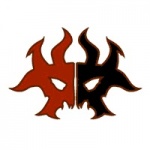It’s about that time again. The full spoiler for Dragon’s Maze has gone up, and soon enough the real cards are going to be in our hands. This weekend, gamers around the world are going to have a chance to crack open packs of the new set for the first time. I’m going to be one of them, as I’ll be spellslinging at my local Prerelease.
Dragon’s Maze is unique in the history of Magic because it marks the first time that a new set is going to be played together with two previous sets that were played as standalones. That means that not only do you have to think about how the cards from the new set interact with cards from the old ones, but you need to reimagine the context for the cards from both of the previous sets. This makes wrapping your head around things for the Prerelease quite a bit more challenging than usual.
I’m trying to sort through things myself, so I thought I’d bring you along for the ride. I’m in the same boat as the rest of you. I haven’t played with Dragon’s Maze, nor have I played with Return to Ravnica and Gatecrash together. But I have played a whole lot of Magic in my day, so hopefully my instincts can help shed some light on the important things to look out for this weekend when you’re playing at your Prerelease.
There’s a lot to take in, so I figured the best way to break things down is by guild. After all, everyone playing in a Prerelease this weekend is going to choose a guild to represent. You’ll receive one guild booster pack of your chosen guild and four booster packs from Dragon’s Maze as well as a booster pack from an allied guild. Allied guilds are those that share a color with your chosen guild.
It’s important to note that the booster you’ll receive for your allied guild will be from the set opposite that from which your chosen guild originated. That is to say that if you choose Izzet, you can only receive a Simic, Boros, Dimir, or Gruul pack for your allied guild. You cannot receive a Rakdos or Azorius pack despite sharing colors with them because they both originated in Return to Ravnica, the same set as Izzet.
No matter what your guild choice, the majority of your cards will be from random packs of Dragon’s Maze. You only receive one guild pack and one allied guild pack, so it’s entirely possible that your off-guild cards from Dragon’s Maze entirely outshine what you receive from your Return to Ravnica and Gatecrash packs. Keep in mind that all of the advice contained within is just about the direction your guild will likely push you and what you want to look for to complement it—the best build of your deck may be something else entirely if your Dragon’s Maze packs don’t cooperate. Dragon’s Maze is also a small set, which means you’ll get more of the same commons and are more likely to get individual uncommons than in the larger sets.
One last thing—unlike the Return to Ravnica and Gatecrash Prereleases, you cannot play your Prerelease card in your deck for this event. That was a special exception to the normal Prerelease rules that was used for those tournaments, so don’t go putting your Maze’s End in your deck. Don’t worry—it probably wouldn’t be good anyway.
Without further ado, let’s take a look at the guilds!
Azorius

Azorius in Return to Ravnica Limited performed best in an aggressive deck based around fliers. The detain mechanic could be used defensively but was at its best when it was forcing through damage and helping control the tempo of the game.
The potential allied guilds for Azorius are Dimir, Orzhov, Boros, and Simic. Of these, I think Orzhov is likely to be the best fit. The combination of all three sets seems like it will almost certainly create a format that is slower than the previous iterations, both due to the prevalence of three-color decks powered by Guildgates and due to the general content of Dragon’s Maze. Cards like the Gatekeeper cycle certainly lend themselves toward longer games than we saw in Return to Ravnica or particularly in Gatecrash.
This leads me to believe that evasion creatures and effects that grow more powerful as the game drags on are likely to be even better than they’ve been before. Orzhov obviously offers extort, which fits this bill perfectly, along with cards like Smite and Executioner’s Swing. Dimir was almost laughably weak in the context of the blazing fast Gatecrash Limited format, but it seems poised for a resurgence now that Dragon’s Maze is here. Cipher cards that were previously very difficult to play may now suddenly be quite potent. I imagine Last Thoughts and Midnight Recovery might be among these. Even Voidwalk may have a home now that it’s sharing the same format as populate-happy Selesyna.
Boros and Simic seem like the weaker pairings for Azorius, though I can see builds that work well with them. Battalion certainly works very well with flying creatures, especially when the battalion creatures are things like Daring Skyjek that gain flying themselves. I would see a Boros/Azorius deck best playing out like the highly aggressive Azorius decks in Return to Ravnica, which with the right cards could potentially run over the slower decks in the full format. Simic seems the least well suited to pair with Azorius
As far as cards in Dragon’s Maze are concerned, the commons that immediately jump out at me are Runner’s Bane and Deputy of Acquittals. Runner’s Bane is a great cheap removal spell that can either protect you from a fast start from your opponent or push your fliers past cards like Towering Indrik. Deputy is a great response to opposing Runner’s Banes and Arrests and the like, as well as being a nice trick to save your creatures from any kind of removal if you can keep mana up. Maze Glider seems like a potential stalemate breaker in the right deck. Being able to send your Hussar Patrols or the aforementioned Deputy of Acquittals to the air can definitely end a stalled game. Haazda Snare Squad also seems pretty solid, giving you a reasonably sized body to defend with that can help tap down blockers when you’re ready to start attacking.
Lyev Decree seems like a card that could have a home in a particularly aggressive Azorius/Boros deck or something similar but probably shouldn’t end up in most of your decks. Hidden Strings, on the other hand, probably shouldn’t see play at all. Its effect is one that really isn’t very useful to trigger after combat damage. What are you going to do—tap an opposing creature that already didn’t block? I suppose you could untap one of the creatures you attacked with, but that seems like marginal value to say the least.
Among the uncommons and rares, Aetherling is by far the most impressive. It seems incredibly difficult to beat in any kind of extended game since it can become unblockable and dodge any kind of removal—even sweepers. Lavinia of the Tenth, Ascended Lawmage, and Jelenn Sphinx all seem good as well, but nothing quite compares to the newest coming of Morphling.
Overall, I think Azorius is a fine choice for the Prerelease. Slower formats like this one looks to be tend to lend themselves toward controlling decks with evasion creatures rising to the top, and Azorius has the tools to do just that.
Rakdos

Rakdos was the most aggressive guild in RTR Limited. A combination of unleash plus the best removal spells in the format gave it blazing starts that could frequently be hard to stop. While the most popular Rakdos decks in its native format were ultra-aggressive, it also had the tools to play a midrange strategy with big monsters and lots of removal, preferably Stab Wound. Though Stab Wound may not be a Rakdos card specifically, it can still show up in the Rakdos packs, and it’s likely to be even better in a slower format.
The potential allied guilds for Rakdos are Gruul, Dimir, Boros, and Orzhov. Of these, the best fits are likely to be Gruul and Boros, as they mesh best with Rakdos’s aggressive bent. Gruul is probably at the top since Rakdos tends to be more focused on clearing the path for a small number of creatures rather than flooding the board. It was already hard enough to stop Splatter Thugs back in RTR Limited, and now they’ll have bloodrush backing them up! Boros offers some good cheap aggressive creatures, but Rakdos decks tend to be somewhat heavier on spells, so they’re less likely to make great use of battalion.
Dimir has some good tools, like the virtually unblockable Deathcult Rogue and Shadow Slice to help close out games, but the various milling cards (short of Grisly Spectacle) and the like certainly don’t mesh with what Rakdos wants to do. Orzhov similarly can offer some decent aggressive cards but is also going to show up with cards like Smite that you really don’t want to see.
In Dragon’s Maze, the top cards you’re going to want to look for are Fatal Fumes and Punish the Enemy. Both of them are relatively expensive removal spells, but they’re removal spells nonetheless. On the creature front, I’m most excited about Rakdos Drake and Rubblebelt Maaka. The Drake is effectively a 2/3 flier for three, which isn’t something Rakdos comes by often. The extra point of toughness helps keep it from trading with opposing 2/2 fliers, of which there are many. The Maaka is a solid 3/3 body for four mana, but the more exciting part is the +3/+3 bloodrush effect for just a single red mana, making it probably the best common bloodrush card we’ve seen yet.
Ubul Sar Gatekeepers may not be a body you’re interested in, but if you have enough Gates to trigger it regularly (three-to-four or so), you can’t go wrong with what is effectively a removal spell tacked on to a creature. Morgue Burst is an interesting card for less aggressive Rakdos decks that can provide a two-for-one later in the game or even kill an opponent with a big enough creature, but I’m a bit wary of six cost spells that require an additional condition to be met before they’re good.
For rares and uncommons, you can’t go wrong with Exava, the Blood Witch, especially if you get a good pack of unleash creatures in Return to Ravnica. Carnage Gladiator seems fairly awesome to me since you’re likely to want to be attacking and forcing your opponent to block and lose life. Master of Cruelties is bizarre if nothing else and can probably put your opponents in some bad positions, but I’m not quite sure how to evaluate him yet. And last but not least, Sire of Insanity is a card that’s sure to change the way you play, encouraging you to cast all of your cards as soon as possible just to empty your hand as you cast him. A big body that’s sure to strip all of your opponent’s ways to deal with him is certainly great when you’re ahead, and that’s where Rakdos wants to be.
Rakdos would not be my pick for the Prerelease if I were looking to win since I feel like aggressive decks aren’t positioned well in the format, especially with four packs of Dragon’s Maze. If you’re Rakdos through-and-through, more power to you, but my inclination would be to stay away. But if you’re a true Rakdos, you don’t care what I think anyway, right? [Editor’s Note: You’re right! We don’t care what you think, green mage!]
Izzet

Izzet is a guild that a lot of people misunderstood the first time around. Early on, people tried to draft defensive spell-based Izzet decks full of Divinations and the like, and they got crushed. It wasn’t until later that people figured out the best way to draft Izzet was extremely aggressively, prioritizing cards like Pursuit of Flight. The slower format Dragon’s Maze is likely to bring may very well see this shift. Is it time to bring Divination back?
Izzet’s potential allied guilds are Dimir, Gruul, Boros, and Simic. None of these really strike me as meshing particularly well or poorly with Izzet since it’s such a schizophrenic guild. Dimir seems likely to lend itself to the more spell heavy Izzet direction, while the other three guilds would tend to pull in the direction of aggro.
Interestingly, many of the Izzet creatures in Dragon’s Maze play up the "cares about spells" aspect. Both the common Nivix Cyclops and the uncommon Fluxcharger are great defensively statted creatures that can change gears and go offensive when you play a spell. This leads me to believe that Izzet decks are likely to want to be generally defensively oriented rather than built to go aggro, which is unfortunate for the Prerelease because its allied guilds are largely focused on beating down. It’s possible that Simic would be a good pairing because of the polarized stats of its creatures, however, and Simic’s similar play pattern of playing defensive while its creatures grow and then going on the offensive. My inclination is that it’s likely the best pairing with Izzet.
The commons to look out for in Izzet are the same removal spells mentioned earlier: Runner’s Bane and Punish the Enemy. Rubblebelt Maaka is great if you’re aggressive and still solid if you’re controlling. For uncommons and rares, Dragonshift is a fairly hilarious card that can serve as removal or a trick to keep a creature alive when cast normally that also doubles as an Overrun like effect when overloaded. The aforementioned Fluxcharger seems quite solid on both offense and defense, while Turn/Burn is an all-around excellent spell that can serve as straight up removal or anything or a great two for one trick. Still, the best card to hope to open is still probably Aetherling, as mentioned in the Azorius section above. I doubt that’s going to change for any of the blue guilds we discuss. Ral Zarek is certainly sweet, but my guess is that Aetherling is ultimately better.
Overall, I’m not too impressed with Izzet for the Prerelease. It was all over the place in Return to Ravnica and doesn’t mesh particularly well with its potential allied guilds in Gatecrash. I advise staying away if you’re looking to do well.
Golgari

Golgari, like Izzet, had an interesting trajectory in the RTR Limited format. Early in the life cycle of the season, people thought Golgari was by far the worst guild, but by the end it was a favorite of many players, including Ben Stark, who piloted Golgari to victory at Grand Prix Indianapolis just before the winter holidays. Scavenge was at first vastly underappreciated and later on heralded as a great tool to eke out edges in longer games—a characteristic that lends itself well to the slower format we’re likely to see with Dragon’s Maze.
Golgari’s potential allies are Gruul, Dimir, Orzhov, and Simic. Since Golgari is among the more flexible guilds in Return to Ravnica—capable of playing aggressive with cheap threats and pump spells or going long with scavenge—it can mesh reasonably well with any of these. The best combinations are likely to be Gruul and Simic since they’re also guilds that are good at using every part of the buffalo.
Pairing with Gruul gives you bloodrush cards to hit with your Grisly Salvages, and you can even make reasonable use of the bigger Gruul cards like Ruination Wurm that were fairly poor in Gatecrash only. With Simic, you get a lot of synergies between scavenge and the various cards that care about +1/+1 counters, like Sapphire Drake and Crowned Ceratok. It also sets you up well to best use Mutant’s Prey, the Pit Fight for creatures with +1/+1 counters—likely to be pretty powerful in a Simic/Golgari deck and fairly hard to use elsewhere.
Other top cards to look out for in Dragon’s Maze are Fatal Fumes and Ubul Sar Gatekeepers. Golgari gets their own common removal spell in Drown in Filth, but it’s hardly a consistent one—my guess is that it’s hard to play without at least a few copies of Grisly Salvage or other ways to get land to your graveyard. Thrashing Mossdog is like a Korozda Monitor that also blocks fliers and scavenges for one less mana, which is a pretty serious upgrade on what was previously a fairly unexciting card.
For rares and uncommons, Putrefy is clearly great, as is Gaze of Granite—it’s hard to go wrong with removal and sweepers. Deadbridge Chant seems totally bonkers as long as you don’t deck yourself, though that seems tough to do when you can cast your best spell every turn once your graveyard is empty. Varolz seems very strong as well since you can just build monsters out of anything that dies and eventually overwhelm your opponent with value.
Pretty much every Golgari card in the set seems solid at least. If we were getting guild packs of Dragon’s Maze instead of the other sets, I’d say Golgari is an excellent choice. Even though that’s not the case, I’d still say it’s a good way to go. Lots of tools for playing the long game along with solid pairings with most of its allied guilds make it a totally reasonable choice for the Prerelease—and probably the guild I’d choose if my allegiances didn’t lie elsewhere.
Selesnya

And here’s my guild. Selesyna was pretty much the undisputed king of Return to Ravnica Limited. The combination of efficient creatures plus populate made it frequently the best early game and best late game strategy in the format. Selesyna has some of the best rares and uncommons in RTR, with Collective Blessing; Trostani, Selesnya’s Voice; and Vitu-Ghazi Guildmage headlining the list of goodies you can get in your guild pack. [Editor’s Note: The view from Brian’s high horse must be pristine.]
Selesnya can end up paired with Gruul, Simic, Boros, or Orzhov, any of which can lead to a solid deck. My inclination is that the best possible combination is with Orzhov, assuming you have a decent amount of populate, since you end up with a bunch of tools for winning longer games. With Boros or Gruul, you’re looking for the combat tricks that took something of a back seat in RTR Limited, like Common Bond or Savage Surge, since you’re more looking for ways to break through on the ground than draw the game out. With Simic, you have some cute combinations like populate with Miming Slime, Ooze Flux, or Mystic Genesis, all of which seem like pretty fun tokens to copy.
None of the Selesyna commons in Dragon’s Maze really stand out, but its uncommons and rares are awesome. Advent of the Wurm has the potential to be devastating, especially in combination with any number of populate effects. Alive // Well is a consistent way to make Centaur tokens that can also put a game largely out of reach for any kind of aggressive deck.
Trostani’s Summoner may cost a lot to cast, but it’s a huge amount of value from a single card. Some decks that expected to go long in RTR played Horncaller’s Chant to good effect, and this is cheaper and provides a lot more value with all kinds of tools to populate. Keep in mind that the Cluestones will make it a lot easier to play extra mana in your deck and accelerate without worrying as much about flooding, which makes effects like this much more reasonable. And if your Scion of Vitu-Ghazi gets to populate a 4/4 when it comes into play? Well, that’s just gravy. Amusingly enough, I actually think the second coming of Armadillo Cloak (aka Unflinching Courage) is likely to be one of the less impressive Selesnya cards given how the format is likely to play out, and that’s saying something.
I’m going to be sticking with my Selesyna brethren for the Prerelease, and I feel comfortable with that decision. One of the drawbacks of G/W in most formats is a lack of removal, but pretty much all of the common removal in this format is pretty weak, so there’s not the same incentive to play black or red that exists when you’re dealing with cards like Doom Blade or Lightning Bolt. I’m ready to populate my army to victory.
Boros

Boros was the flagship aggressive guild in an especially aggressive set. The battalion mechanic rewarded particularly high creature counts particularly low on the curve.
The potential allies for Boros are Azorius, Izzet, Rakdos, and Selesyna, which we’ve already covered. None of these strike me as optimal pairings for Boros. The more aggressive Selesnya cards lend themselves well to the guild, as can some of the red Rakdos creatures, but none of them really have quite the same flood-the-board-with-creatures mentality that Boros does.
Boros does get some pretty sweet cards in Dragon’s Maze, however. Pretty much every gold Boros card is excellent, from Warleader’s Helix as one of the top removal spells in the set to the combat-defining Boros Battleshaper, the battalion-enabling Blaze Commando, and the largely unstoppable Tajic, Blade of the Legion. Many of these cards seem tailored to giving Boros the ability to play a longer game, moving it away from the focused creature rush strategy it had in Gatecrash and providing more of a long game plan.
I’m skeptical of how effective that approach can be, however, since it’s essentially a 180 from how the guild played out before. How good can a deck based on an entire pack of cheap aggressive creatures really be in a format full of 2/4s? Cards like Wojek Halberdiers, Boros Elite, and Daring Skyjek match up rather poorly against Gatekeepers in every color. While the new Boros cards themselves may be pretty impressive, many of your best cards from Gatecrash are no longer very impressive, so I’d be hesitant to throw in my lot with the Boros Legion this weekend.
Simic

Simic was in a strange place during Gatecrash Limited. Simic evolve decks always felt like they had the potential to be extremely powerful as long as they came together in the right order. The problem was that the format was so fast that it was frequently difficult to build your armies as big as you’d like, and you didn’t have great tools to keep yourself from being overrun. With Dragon’s Maze slowing down the format, Simic may have a chance for resurgence.
Simic’s possible allies are Azorius, Izzet, Selesnya, and Golgari. Much like the creatures in the guild, I feel like Simic is quite adaptable and could potentially pair reasonably well with any of these. All of them are capable of playing to buy the time that Simic creatures want to evolve and offer a number of interesting synergies (many of which I touched on in earlier sections).
While the other Gatecrash guilds mostly get worse with the plethora of 2/4 creatures around, Simic thrives on having so many great creatures to trigger evolve. Previously, Simic didn’t have all that many good options to grow cards like Shambleshark much more than once, but with Gatekeepers everywhere (and the blue one being one of the best), you’ll have far more ways to make your team huge.
Simic’s cards in Dragon’s Maze all look pretty impressive. Beetleform Mage is a great cheap creature that can become evasive when you need it at common. The uncommons and rares are pretty great as well. Progenitor Mimic is largely unbeatable unless your opponent kills it immediately, while Renegade Krasis can make your entire team get out of hand very quickly. Plasm Capture probably will never be as impressive as you want it to be, unfortunately, but Vorel of the Hull Clade is likely to turn out to be much better than he looks, especially in combination with Golgari’s scavenge cards. Even Species Gorger is a great underpriced monster that can let you reuse enters-the-battlefield triggers or just evolve your entire team every turn while providing a huge body that your opponent can’t attack into effectively.
Overall, I think Simic seems very strong going into Dragon’s Maze. I think it’s one of the guilds that is most improved from its previous stature since longer games provide more opportunities for its creatures to do their thing. I highly recommend giving it a shot at the Prerelease.
Gruul

Gruul did a lot of smashing in GTC Limited. One of my favorite decks was all super cheap creatures and tons of Act of Treasons and the like. I actually had an opponent at Pro Tour Montreal concede before the fifth turn in two games out of our match—that was how fast and brutal my deck was. Full block Limited won’t be that fast. In particular, full block Sealed Deck won’t be nearly that fast. That said, Gruul still has a lot to offer because bloodrush is an awesome mechanic even in games that take a bit longer.
Gruul can be paired with Rakdos, Selesnya, Golgari, or Izzet. It’s likely to be best with Golgari or Rakdos since it’s looking to leverage the same kind of aggression that Gruul offers, though with the right mix of cards, Selesyna seems like it could be fine too. Izzet plus Gruul seems like a terrible mix—Izzet cares about spells, while Gruul just wants all creatures to bloodrush through. Gruul smash silly experiments!
Gruul gets access to Zhur-Taa Druid at common, which is importantly the only mana acceleration effect that costs less than three mana in the entire format. This is a pretty big deal and even better in that the Druid can actually kill your opponent by tapping for mana. I would not be surprised if the Druid turns out to be one of the best commons in the set. It’s particularly notable because Gruul makes a significant shift from Gatecrash, much like Boros does, and is a much higher curve deck in the new format than it was in the old. This makes many of the old cards like Ruination Wurm much more attractive than they once were. It’s also worth noting that more defensive red decks may actually want cards like Furious Resistance, which was totally unappealing in Gatecrash but can actually do good work in the full block format.
Also at common are Rubblebelt Maaka and Punish the Enemy, which I previously mentioned—both solid all-around cards for any red deck. For Gruul in particular, the uncommons and rares are also pretty stacked. Armed // Dangerous is one of the best Overrun effects around, while Flesh // Blood is a one-sided Pit Fight that can also kill an opponent. It goes without saying that Savageborn Hydra is pretty obviously a monster.
Ruric Thar, on the other hand, seems likely to be less impressive in Limited than he looks like he’ll be in Constructed thanks to his "must attack" clause. Sure, he’ll deal six damage to someone who uses a trick to take him out, but there will be a lot of board states where you can’t even play him because he’ll just rush to his death the following turn. My inclination is that he’s powerful but inconsistent. I’d certainly play him because he’s awesome, but he’s not the bomb he looks like he might be at first glance.
Overall, I like where Gruul seems to be positioned in the format. There’s tons of mana acceleration to be had, and Gruul not only has the best of it but is in perhaps the best position to take advantage of it with fat creatures. Unlike Boros, its best cards from Gatecrash don’t go to waste in the same way as the format slows down since bloodrush remains effective against 2/4s across the land.
Orzhov

The consensus best deck in Gatecrash Limited, Orzhov thrives on games going long as it plinks away here and there with extort. It seems, then, that it ought to be in great shape as the format slows down with the introduction of Dragon’s Maze
Orzhov can be paired with Azorius, Selesnya, Golgari, or Rakdos. Of these, Azorius and Selesnya seem like the best fits, followed by Golgari then Rakdos. Stalling the game out and winning with evasion and extort seems best supported by detain and populate.
Orzhov has some powerful bomb rares in Dragon’s Maze along with some solid utility. The scariest card to me is Pontiff of Blight, which means that you can virtually kill your opponent whenever you play a spell if you have enough mana. It certainly goes well with the virtually unkillable Blood Baron of Vizkopa and combos well with him too! Teysa is also pretty impressive, combining No Mercy with a nearly impenetrable blocker on the ground. Interestingly, while Tithe Drinker would have easily been the best Orzhov common in Gatecrash, it loses a lot of its luster in the new format because the 2/1 body—even with lifelink—is much less important and effective than it was before. It still has extort, though, so it’s certain to be a significant factor in Orzhov decks in the format even if it never attacks or blocks.
While Sin Collector is likely to be a powerful card in Constructed, I’m less convinced it’ll be quite so effective in Limited. It has a decent chance to snag a spell if you cast it early, but the body attached is unlikely to make a huge impact. On the other hand, while Profit // Loss certainly isn’t the second coming of Zealous Persecution when it comes to 60-card decks, it’s a card capable of creating huge swings in Limited that can break open the potential stalemates that this format will be much more susceptible to than its predecessor.
All told, Orzhov is strategically well positioned in this format, and I expect it to be a good choice. It may not get the best individual cards from the set, but it lends itself particularly well to the slower pace the format is likely to have, which means it doesn’t need the same kind of help to stay competitive. I give it a thumbs up.
Dimir

Did you ever play t-ball? When I played t-ball, at the end of each season the coach would give out awards to the players. One of those awards was "Most Improved." The "Most Improved" award inevitably went to the worst player on the team. It was like it was a consolation prize for being so bad and encouragement to keep playing despite that.
Dimir wins the "Most Improved" award going from Gatecrash to the full block. It has to because it was so bad in Gatecrash only that there were frequently entire draft tables without a Dimir drafter and those players were all correct to pass up on it. Dimir required far too much to go right for its strategy to be good. It had conditionally good spells with cipher, conditional removal with cards like Death’s Approach, and the smallest creatures of all of the guilds. A recipe for success!
With the format likely to slow down a great deal with Dragon’s Maze, however, Dimir may very well make a comeback. With Azorius, Golgari, Izzet, and Rakdos as potential allies, it’s probably best off pairing up with one of the two blue guilds since maximizing cipher depends so much on evasion creatures and the value of Dimir relies heavily on the value of cipher.
Or at least it did. Dimir gets quite a few very good cards in Dragon’s Maze. Pilfered Plans is a Divination that helps enable your mill effects, both of which—card draw and milling—are likely to be more powerful in the new format. It gets the two best Gatekeepers, with card draw and creature removal tacked on to the 2/4 bodies it wants to defend itself. It gets one of the best removal spells in Warped Physique and probably the best uncommon split card in Far // Away. Sure, it has some stinkers like Reap Intellect and Trait Doctoring (why is every cipher spell in the new set so bad when the mechanic already debuted so poorly in Gatecrash, by the way), but overall it has some pretty solid tools to help turn things around from the lowest of the low points it was at in Gatecrash.
I’d actually recommend giving Dimir a shot, if only for the chance to see how different the cards play outside of the Gatecrash format. It was unfortunate that the guild was so bad there given how fun it was to get the various moving parts working together, and I think it would be a blast to have a chance to put them together in a friendly environment.
So that’s the end of the guilds. General points to review:
- Full block will likely be slower than either standalone set before it. Reevaluate old cards in that context. Just because something used to be bad doesn’t mean it still is!
- Look for cross-set synergies, like scavenge + Crowned Ceratok. They’re in there!
- Don’t get hung up on sticking to your chosen guild. You get way more cards from Dragon’s Maze. Let those guide you.
- Have fun! It’s the Prerelease. That’s the point.
Well, this certainly turned out to be a monster of an article. Hopefully you learned something from it, and I didn’t just write 5000+ words in vain! Enjoy your Prerelease! If you’re in southern California and haven’t decided on a store just yet, consider swinging by San Diego Cards and Comics in Mira Mesa and come battle in Spellslinging! I’ll be there representing my Selesnya brethren.
Until next time,
bmk
